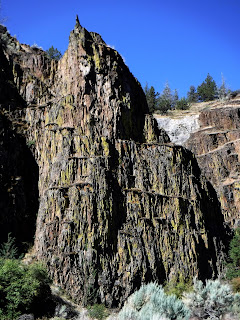Last night was great in the observatory (obs) with temps starting in the low 60's at about 10 pm and ending at 12:45 am at 45 degrees.
NOTE: Click on images for a larger view!
M5
15 subs @ about 20 sec each,
ISO 1600 - Canon t2i - Prime focus
Meade 8" SCT GPS on a equatorial wedge
stacked with DeepSkyStacker
for a total of 5 minutes 15 secs
M5 info: Started before total astronomical darkness with Messier 5 (M5) globular cluster in the constellation Serpens. It was discovered by Gottfried Kirch in 1702 when he was observing a comet. Charles Messier also noted it in 1764, but thought it a nebula without any stars associated with it. William Herschel was the first to resolve individual stars in the cluster in 1791, counting roughly 200.
Binoculars or small telescopes will identify the object as non-stellar while larger telescopes will show some individual stars, of which the brightest are of apparent magnitude 12.2. Spanning 165 light-years in diameter, M5 is one of the largest known globular clusters with more than 100,000 stars!
The bluishness of the background sky is due to it not being quite dark yet.
M9
9 subs @ about 15 sec each,
ISO 3200 - Canon t2i - Prime focus
Meade 8" SCT GPS on a equatorial wedge
stacked with DeepSkyStacker
for a total of 2 minutes 15 secs
M9 info: Now it was getting darker and I attempted to image this faint star cluster that was low between pine trees. M9 is a globular cluster in the constellation of Ophiuchus. The cluster was discovered by French astronomer Charles Messier on June 3, 1764, who described it as a "nebula without stars".[8] In 1783, English astronomer William Herschel was able to use his reflector to resolve individual stars within the cluster. It is one of the nearer globular clusters to the center of our Milky Way Galaxy.
I had to end photography of this object long before I wanted to due to the fact that it slid behind my neighbor's tall pine tree.
M107
9 subs @ about 36 sec each,
ISO 6400 - Canon t2i - Prime focus
Meade 8" SCT GPS on a equatorial wedge
stacked with DeepSkyStacker
for a total of 3 minutes 15 secs
M107 info: is the last globular cluster in the Messier Catalogue. It is a very loose globular cluster in the constellation Ophiuchus. It was discovered by Pierre Méchain in April 1782 and independently by William Herschel in 1793. It wasn't until 1947 that Helen Sawyer Hogg added it and three other objects discovered by Méchain to the list of Messier objects.
M107 is close to the galactic plane at a distance of about 20,900 light-years from Earth. There are 25 known variable stars in this cluster.
Again, I found this to be a fairly faint star cluster and more difficult to image.
M27
20 subs @ about 30 sec each,
ISO 3200 - Canon t2i - Prime focus
Meade 8" SCT GPS on a equatorial wedge
stacked with DeepSkyStacker
for a total of 15 minutes
M27 info: The Dumbbell Nebula (also known as Apple Core Nebula, Messier 27, M 27, or NGC 6853) is a planetary nebula in the constellation Vulpecula, at a distance of about 1,360 light-years.
This object was the first planetary nebula to be discovered; by Charles Messier in 1764. At its brightness of visual magnitude 7.5 and its diameter of about 8 arcminutes, it is easily visible in binoculars, and a popular observing target in amateur telescopes.
This is the original uncropped image from last night's imaging. (Note: This image takes in the same area of the sky as the prior images)
I am including in this report a cropped and post processed closeup image of M27. Enjoy!
M27
Note to self:
* There is a need to get a little better polar alignment so there isn't so much north/south drift over 45 minutes of imaging.
* Need to work on optical alignment to see if I can get a little sharper stars for more detail
* Need to try M27 with the Canon XS modded camera to try to draw out more of the reds in M27






























































